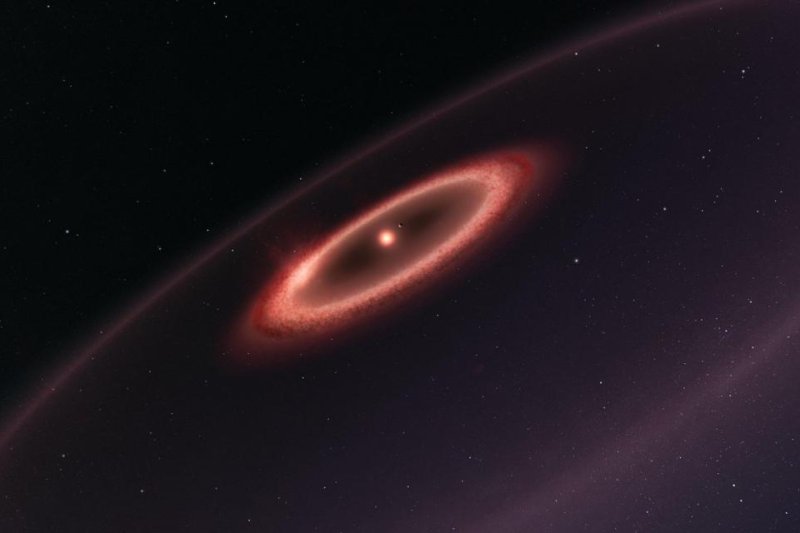An artistic rendering shows the pair of dust rings detected around Proxima Centauri and its lone exoplanet. Photo by ESO/M. Kornmesser
Nov. 3 (UPI) -- With the help of Chile's ALMA Observatory, astronomers have discovered dust around the star nearest to Earth, Proxima Centauri.
Last year, scientists found an exoplanet circling the faint red dwarf, which lies four light-years from our solar system. The latest discovery -- soon to be published in Astrophysical Journal Letters -- suggests Proxima b has siblings.
In addition to a region of dust relatively close to the star, ALMA also detected the faint signature of a more distant dust belt. The ring could be similar to belts of dusts and debris found in the other reaches of our own solar system. They likely contain fragments of rock and ice that weren't incorporated into planets.
"The dust around Proxima is important because, following the discovery of the terrestrial planet Proxima b, it's the first indication of the presence of an elaborate planetary system, and not just a single planet, around the star closest to our sun," Guillem Anglada, researcher at the Institute of Astrophysics of Andalusia, said in a news release.
The inner dust belt stretches a few hundred million miles from Proxima Centauri and boasts a mass of approximately one hundredth of Earth's mass. It's temperature is believed to be about the same as that of our own Kuiper Belt -- negative 230 degrees Celsius.
Though less apparent, ALMA's data hints at the presence of another more distant and colder belt some ten times farther away from Proxima Centauri.
"This result suggests that Proxima Centauri may have a multiple planet system with a rich history of interactions that resulted in the formation of a dust belt," Anglada said. "Further study may also provide information that might point to the locations of as yet unidentified additional planets."
Researchers suggest the latest findings are only the beginning. Further investigation is likely to provide new insights and greater detail.
"In combination with the study of protoplanetary discs around young stars, many of the details of the processes that led to the formation of the Earth and the Solar System about 4600 million years ago will be unveiled," said Pedro Amado, also from the Institute of Astrophysics of Andalusia. "What we are seeing now is just the appetizer compared to what is coming!"















